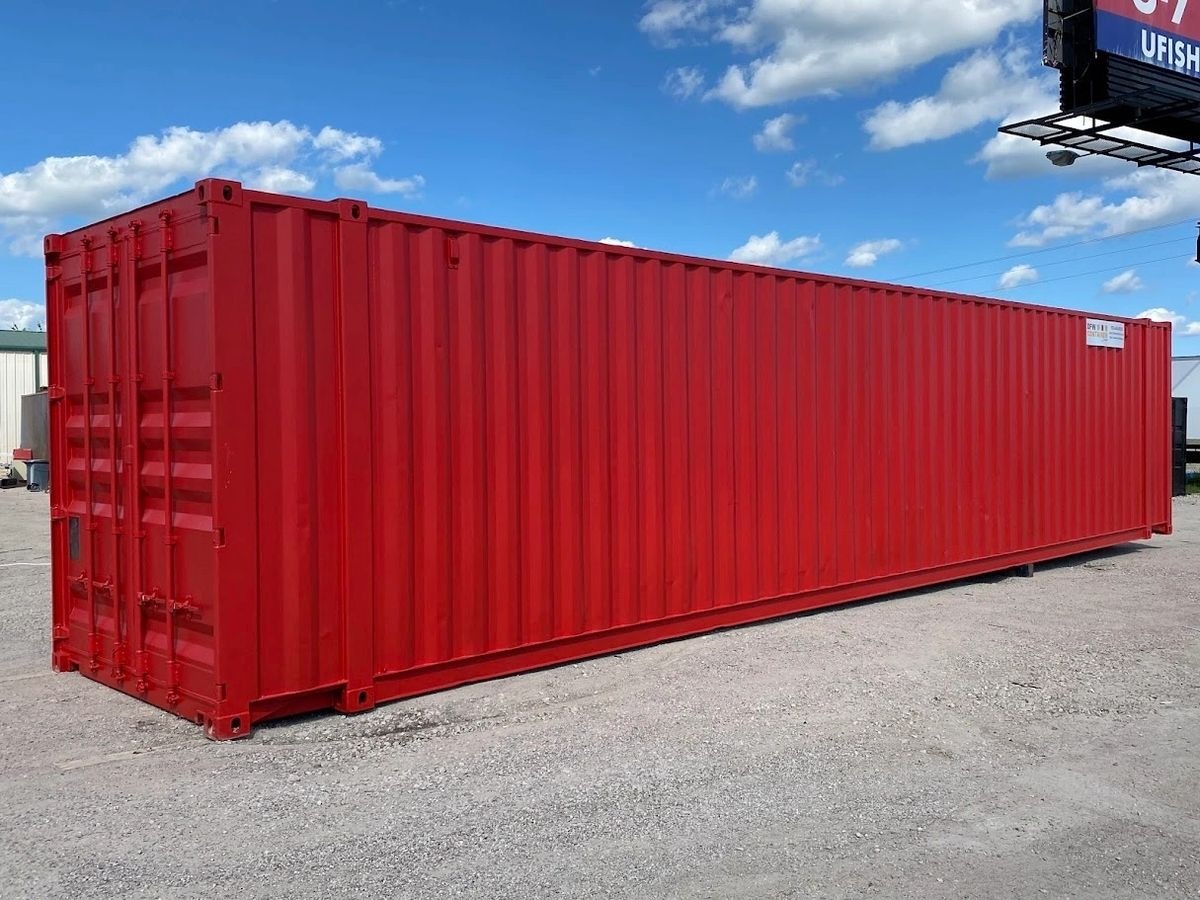17 Reasons To Not Ignore Conex Containers

Discovering the Versatility of Conex Containers: A Modern Solution for Storage and Transportation
Conex containers, likewise called shipping containers, are an important part of worldwide logistics and storage solutions. These robust steel boxes play an essential role in the motion of products throughout the world. Nevertheless, their applications extend far beyond shipping. This blog post looks into the versatility of Conex containers, their history, utilizes, and advantages, and provides responses to some frequently asked concerns.
What are Conex Containers?
Conex containers are standardized metal containers used for transporting products. Initially designed for shipping by sea, these containers are now extensively used for storage, temporary housing, and even ingenious architectural jobs. Shipping Container Business "Conex" originated from the term "container reveal," which encapsulated the essence of expedited shipping.
| Container Type | Dimensions (L x W x H) | Capacity (Cubic Meters) | Common Uses |
|---|---|---|---|
| Standard Container | 20' x 8' x 8.5' | 33.2 | Shipping, Storage |
| High Cube Container | 40' x 8' x 9.5' | 76.4 | Storage, Office Space |
| Refrigerated Container | 40' x 8' x 9.5' | 67.1 | Food Transport, Medical |
| Open Top Container | 20' x 8' x 8.5' | 33.2 | Bulk Cargo |
The Evolution of Conex Containers
The history of Conex containers go back to the early 1950s. The intro of the ISO standardization enabled intermodal transport, facilitating seamless cargo motion by rail, roadway, and sea. The standardization likewise guaranteed toughness and security, making them perfect for long-distance travels. Over the decades, the design and structure have actually progressed to integrate modern amenities, including insulation for temperature-sensitive products and built-in RFID innovation for tracking deliveries.
Flexibility in Applications
Among the most impressive aspects of Conex containers is their flexibility. Here are some typical and ingenious uses:
1. Shipping and Logistics
- Core Purpose: Transportation of goods across oceans and continents.
- Intermodal Transportation: Easily moved between ships, trains, and trucks, boosting effectiveness.
2. Storage Solutions
- Ad hoc Storage: Ideal for property and industrial storage solutions.
- Security: Steel structure provides high security versus theft.
3. Modular Construction
- Eco-Friendly Buildings: Can be repurposed for domestic and business constructions, promoting sustainability.
- Quick Deployment: Construction time is substantially reduced compared to conventional methods.
4. Pop-Up Shops and Cafés
- Short-lived Retail: Used significantly by companies for pop-up occasions due to their mobility.
- Adjustable Designs: Individuals can personalize the containers to reflect brand name looks.
5. Emergency Situation and Disaster Relief
- Short-term Shelters: Can be transformed into homes or centers after natural catastrophes, offering instant shelter.
- Storage for Supplies: Used to keep medical or food supplies in crisis scenarios.
Secret Benefits of Using Conex Containers
Conex containers present many benefits across different applications:
Durability and Strength
Constructed from top quality steel, these containers are created to hold up against severe weather and are resistant to rust.
Cost-Effectiveness
Compared to standard construction techniques or storage facilities, Conex containers are an economical option. Their accessibility in the used market can considerably reduce costs.
Customizability
Containers can be modified to fit specific needs, consisting of the addition of windows, doors, electrical systems, and HVAC units.
Mobility
Easily portable, they can be moved utilizing trucks or cranes, making them a perfect choice for moving workplaces or short-term setups.
Security
Lockable and strong in nature, Conex containers supply an added layer of security for important items.
Regularly Asked Questions (FAQ)
1. Just how much do Conex containers cost?
The price of a Conex container differs commonly based on size, condition (new vs. used), and modifications. Typically, used containers can vary from ₤ 1,500 to ₤ 3,500, while new containers may cost between ₤ 3,000 and ₤ 5,000.
2. Do Conex containers need permits for installation?
It depends upon regional policies. Numerous municipalities need permits for container usage, particularly if they are modified or used for domestic functions. Always examine local zoning laws.
3. What is the life-span of a Conex container?
A properly maintained Conex container can last in between 10 to 25 years, depending on environmental conditions and usage.
4. Can Conex containers be insulated?
Yes, containers can be insulated to ensure heat in chillier climates or to control temperature-sensitive product. Professional insulation techniques exist to keep structural stability.
5. Are Conex containers eco-friendly?
Yes, repurposing Conex containers for different uses can decrease waste and lower the carbon footprint connected with conventional construction methods.
6. How do I select the right size Conex container?
Consider the designated usage, storage requirements, and offered area. Requirement sizes consist of 20-foot and 40-foot containers, but there are numerous sizes readily available to fulfill various needs.
Conex containers represent a considerable development in worldwide logistics and offer varied solutions in construction, storage, and beyond. Their toughness, flexibility, and cost-efficiency make them an essential tool in various markets. As society continues to evolve, so will the function of Conex containers, leveraging their capacity in both standard logistics and ingenious architectural styles. Embracing the versatility of Conex containers not just addresses instant needs but likewise supports sustainable practices in our modern-day world.

